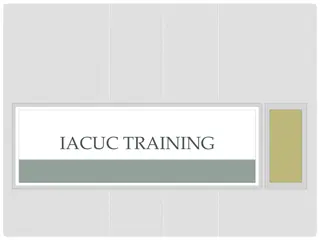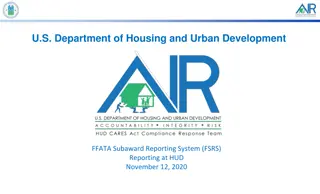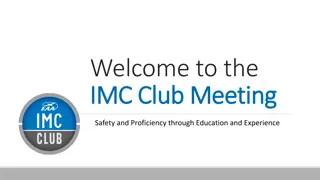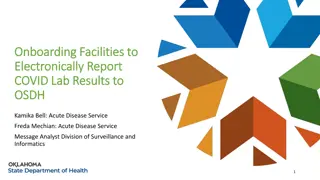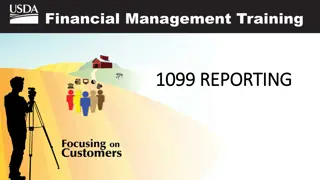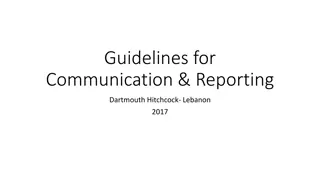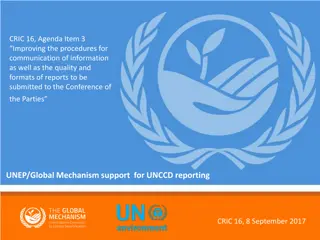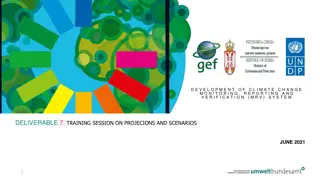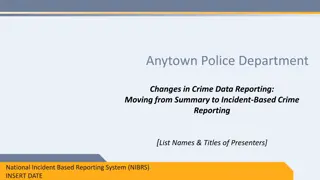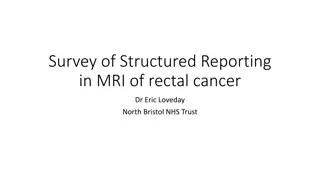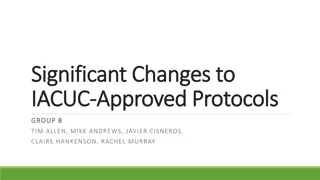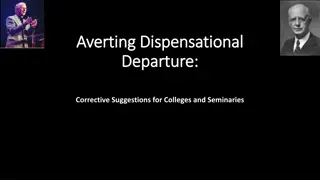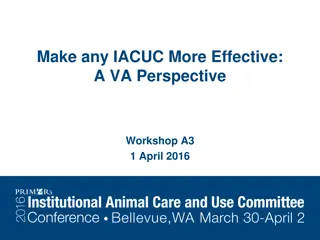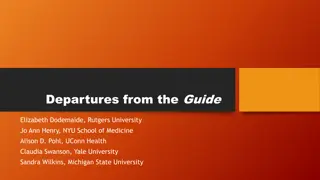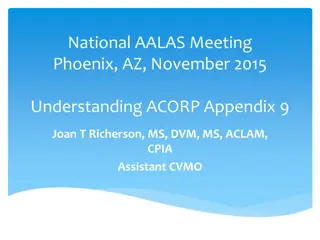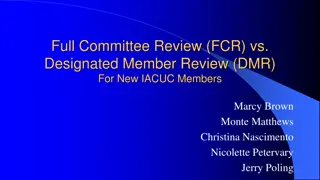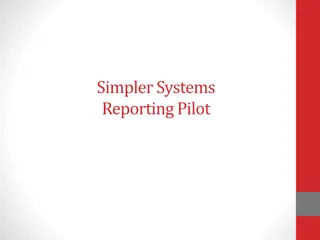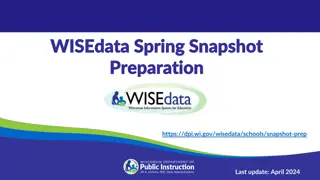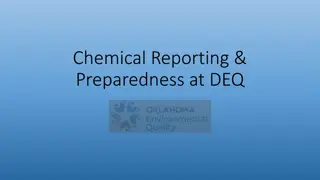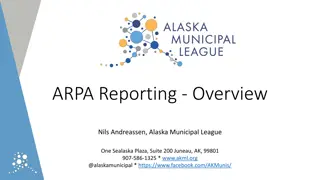IACUC Departures and Reporting Findings
Explore the world of IACUC departures and reporting in this comprehensive guide. Learn to define, identify, categorize, and report findings with objectives and engaging scenarios. Dive into must, should, and may concepts, approved departures, exceptions, and performance standards. Enhance your knowledge through interactive activities like categorizing and reporting scenarios. Sharpen your skills in understanding IACUC protocols with practical examples and discussions.
Download Presentation

Please find below an Image/Link to download the presentation.
The content on the website is provided AS IS for your information and personal use only. It may not be sold, licensed, or shared on other websites without obtaining consent from the author. Download presentation by click this link. If you encounter any issues during the download, it is possible that the publisher has removed the file from their server.
E N D
Presentation Transcript
Departures Kari Koszdin Kirk Lubick Gretchen Hundertmark Dawn O Connor
Goal Audience: IACUC members Goal: Understanding Guide departures and to appropriately report findings to address institutional regulatory burden.
Objectives Participants will be able to: Define must, should, or may. (LOC) Identify an IACUC approved departure, exception or a validated performance standard. (LOC/HOC) Categorize the status of a finding as not a departure, an approved departure, or noncompliance. (HOC) Determine the appropriate reporting requirements for a departure. (LOC/HOC)
Objectives Participants will be able to: Explain the difference between must, should, or may as described in the Guide. (LOC) (Identify) exceptions specifically described in the Guide. (LOC) Determine if an animal care and use program (ACUP) finding is an IACUC approved deviation or a validated performance standard. (LOC/HOC) Categorize the status of a finding as not a departure, an approved departure, or noncompliance. (HOC) Determine the appropriate reporting requirements for a departure from the Guide. (LOC/HOC)
Must, Should and May Shout out: What is a must ? What is a should ? What is a may ? (insert picture of Guide)
Approved Departure, Exception, or Performance Standard Think-pair-share (time: 10 min) What is an IACUC approved departure? What is an exception? What is a performance standard? As a group create an example of each. Report out.
Categorizing and Reporting: Scenarios Each group will be assigned a scenario. Utilize the flow chart provided to determine which outcome for the finding is appropriate. Each group appoints a spokesperson to report out the action(s) to be taken based on the determination made.
Lighting Scenario A During a semi-annual facility inspection an IACUC member noticed that there were overhead red lights on in a rat room. Upon further investigation it was determined that the red lights were left on on all day. During the night the white lights were on. According to the protocol the animals will be on a reverse light cycle. Is this an exception, a departure or a non-compliance from the Guide that should be reported?
Prolonged Restraint Scenario B Sheep are confined to a stanchion for up to 30 days post-surgery. They are provided food, water and 24- hour care. They are not provided any break from the stanchion. They can lay down but their head is restrained so that they must face forward. The protocol was scientifically justified and approved by the IACUC. Is this an exception, a departure or a non-compliance from the Guide that should be reported and to whom?
IVC Cage Sanitation Scenario C Ventilated cages are changed on a 14-day interval. Caretakers assess cages on a daily basis for animal behavior and appearance, and condition of the bedding and cage surfaces. Additionally, the facility conducted a study to correlate cage cleanliness with ammonia levels and CO2 over a period of time to determine that this was an appropriate cage change interval. Is this an exception, a departure or a non-compliance from the Guide that should be reported and to whom?
Social Housing Scenario D A facility houses male rabbits singly. The veterinarian was concerned that pair housing could lead to serious injury or death to the rabbits. The justification for single housing is reviewed regularly by the IACUC and veterinarian. Is this an exception, a departure or a non-compliance from the Guide that should be reported and to whom?
Goal: Understanding Guide departures and to appropriately report findings to address institutional regulatory burden. Objectives: Define must, should, or may. (LOC) Identify exceptions specifically as described in the Guide. (LOC) Determine if a finding is an IACUC approved departure or a validated performance standard. (LOC/HOC) Categorize the status of a finding as not a departure, an approved departure, or noncompliance. (HOC) Determine the appropriate reporting requirements for a departure. (LOC/HOC)
Summative Assessment A pre- and post-test will be given to each individual assessing their knowledge of the following: Identification of Guide departures. Appropriately report findings.
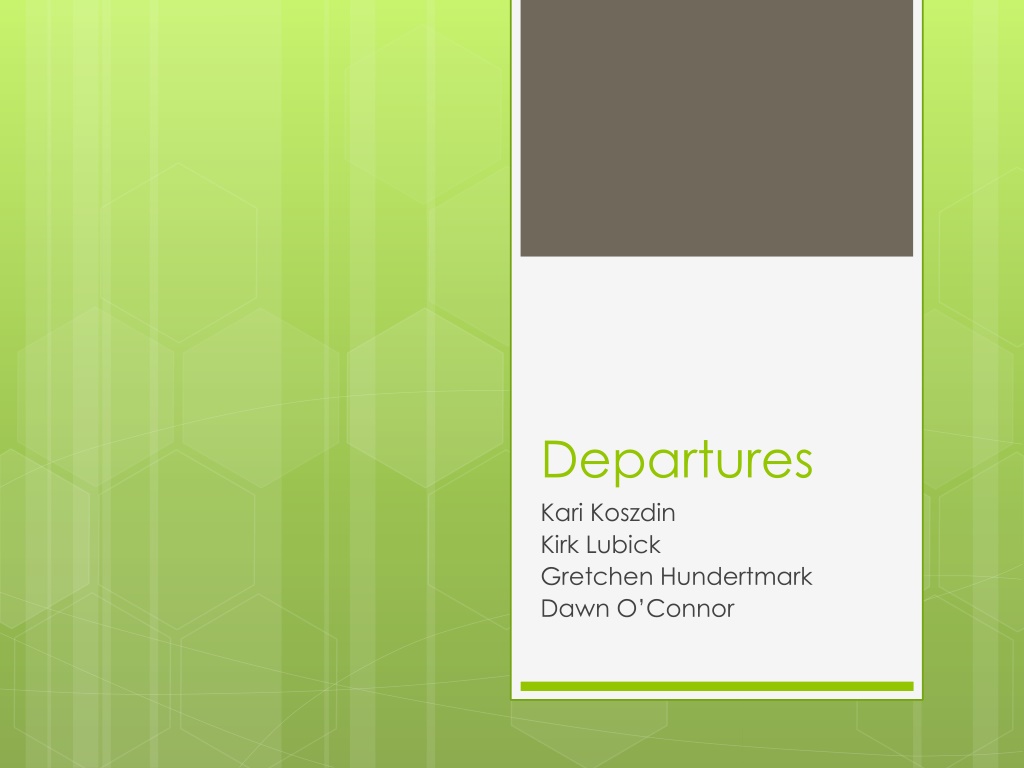
 undefined
undefined











